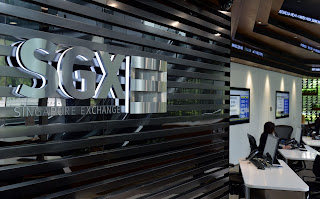As each financial specialist should know, the share trading system has its high points and low points and there are times when we just need to clutch our ventures to ride out the harder waves and in the end we will see an enhanced execution. In this article, we will examine three stocks that are confronting an extreme situation, however, in any case, be worth to clutch to. (share trading tips)
ISOTeam
The past quarter has not been a decent one for ISOTeam as feeble exhibitions were accounted for no matter how you look at it. This was because of a lower number of activities being finished and in addition, bring down edges earned in the midst of increasing rivalry in the area.
The general poor execution is to a great extent because of industry shortcoming. 3Q18 net benefit fell by 52 percent year on year, as income fell 10.6 percent to $14.7 million while net benefit fell 20 percent to $3.2 million.
On the splendid side, ISOTeam has a request book which at present stands at $84.4 million which is relied upon to be finished throughout the following two years. As indicated by RHB, there are additionally "a couple of extensive ventures to be perceived in 4Q18" which will help execution and give financial specialists some income permeability.
RHB still has a Buy approach the stock regardless of bringing down its objective cost to $0.42 as they anticipate that the following quarter will see better execution with acknowledgment of higher edge ventures. The firm is likewise observed as a potential focus for firms that grow presentation to the development division.
Singapore Telecommunications
Singapore Telecommunications' (Singtel) 4Q18 outcome was not extremely promising given that net benefit descended by 17.9 percent year on year, and execution for the whole year was around 3 to 5 percent beneath CIMB examiners' desires.
The weaker outcomes were incomplete because of a poorer execution from Singapore as EBITDA descended by 3 percent year on year. In the meantime in its Australian partner, Optus likewise observed its EBITDA descending by 3.9 percent in 4Q18.
Generally speaking, profit is relied upon to just develop marginally by 1.3 percent in FY19, as overseas partners like Bharti, Telkomsel and AIS should just observe a more grounded recuperation in FY20 onwards.
In any case, CIMB keeps up its Add approach the stock yet brought down its objective cost to $3.90 because of lower than anticipated profit.
Mermaid Maritime
Mermaid Maritime announced an enormous loss of US$6.2 million 1Q18 which surpassed experts' desires for how desperate the circumstance is. Two of its key vessels must be drydocked because of planned support/overviews which as of now prompted desires for weaker execution this quarter. In any case, the lower-than-anticipated usage rate of other accessible vessels added to the poor outcomes in the quarter. In 2Q18, a shortcoming in execution is as yet expected as Asiana (one of its key vessels) was drydocked in the greater part of May 2018.
On a brighter note, Mermaid Maritime's asset report is solid and subsequently should offer help to its stock cost. Likewise, the gathering figured out how to discover a purchaser for two of its old delicate apparatuses that have been available for some time. The deal is relied upon to help decrease the cost acquired of up to US$0.7 million in stacking costs for each year.
By and large, the stock ought not to see a huge drop in share value, given no reasonable impetuses coming soon. Henceforth DBS look into has a Hold approach the stock and a lower target cost of $0.13 on the stock. Source








